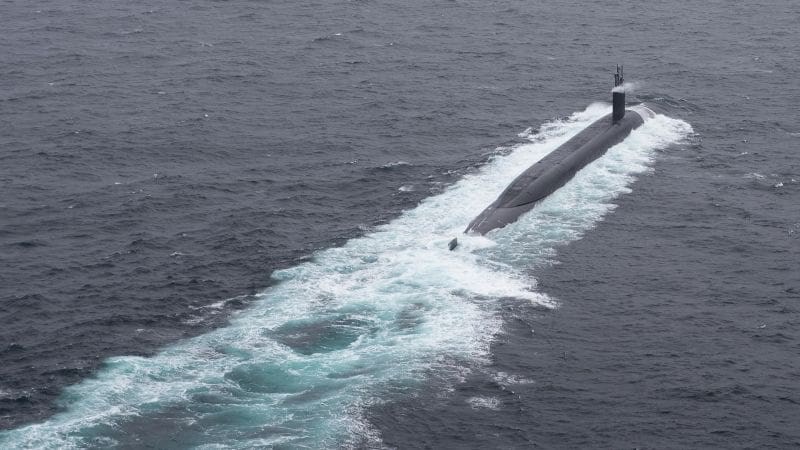
US Navy Ballistic Missile Submarine Makes Port Call in South Korea
Seoul, South Korea – In a significant move amid escalating tensions on the Korean Peninsula, a nuclear-capable US Navy ballistic missile submarine has made a port call in South Korea for the first time in decades. The announcement of the Ohio-class ballistic missile submarine’s presence in the port city of Busan was made by South Korea’s Defense Ministry on Tuesday. This development comes just days after North Korea test-fired what it claimed to be a solid-fueled intercontinental ballistic missile.
The arrival of the submarine coincided with the inaugural meeting in Seoul of the Nuclear Consultative Group (NCG), a joint US and South Korean panel established at a summit in Washington in April. Kurt Campbell, the coordinator for the Indo-Pacific at the US National Security Council, was present at the meeting. The deployment of the submarine follows heightened tensions between the two Koreas, with North Korea conducting advanced long-range missile tests and threatening to shoot down US military reconnaissance aircraft near its territory.
Kim Yo Jong, the sister of North Korean leader Kim Jong Un and a senior official herself, issued a statement expressing concern over the deployment. She claimed that the submarine’s presence would further strain communication between the two sides, accusing the NCG of openly discussing the use of nuclear weapons against North Korea. Kim emphasized that the US should recognize that its extended deterrence system and military alliance with South Korea are not conducive to negotiations.
Each Ohio-class ballistic missile submarine, commonly referred to as “boomers,” can carry up to 20 Trident II ballistic missiles. The Nuclear Threat Initiative estimates that each missile can hold four nuclear warheads, suggesting that each submarine could potentially carry around 80 nuclear warheads. The port call was part of the “Washington Declaration” agreed upon by US President Joe Biden and South Korean President Yoon Suk Yeol during their meeting in April. The declaration aimed to deter North Korea from launching an attack on South Korea.
The establishment of the NCG was a direct outcome of the Biden-Yoon meeting. In a joint statement, the US and South Korea emphasized that the NCG would strengthen their combined deterrence and response capabilities, contributing to peace and stability in the region. The presence of a US Navy ballistic missile submarine in a South Korean port has symbolic significance, but some analysts argue that it reduces the submarine’s military value. Carl Schuster, former director of operations at the US Pacific Command’s Joint Intelligence Center, explained that the submarine’s stealthiness is compromised when it is visible in a port.
Militarily, the submarines do not need to be in close proximity to South Korea to target potential enemies in North Korea due to their long-range capabilities. Blake Herzinger, a research fellow at the United States Studies Centre, emphasized that the element of uncertainty is crucial in nuclear deterrence. A US ballistic missile submarine hidden deep beneath the ocean’s surface, thousands of miles away from North Korea, remains within striking distance but is difficult for North Korea to detect. However, a port visit in South Korea makes the submarine more visible, giving North Korea an advantage.
The presence of a US Navy ballistic missile submarine in South Korea serves as a clear message of the US commitment to its alliance with South Korea and its dedication to providing extended deterrence against potential threats. However, the strategic implications and potential risks associated with this visible deployment should also be taken into account. The situation on the Korean Peninsula remains tense, and further developments are expected in the coming days and weeks.
Sources:
– CNN: https://www.cnn.com/2022/06/14/asia/us-navy-submarine-south-korea-intl-hnk/index.html
– Nuclear Threat Initiative: https://www.nti.org/learn/countries/united-states/delivery-systems/
Original Story at www.cnn.com – 2023-07-18 11:07:00


Comments are closed.